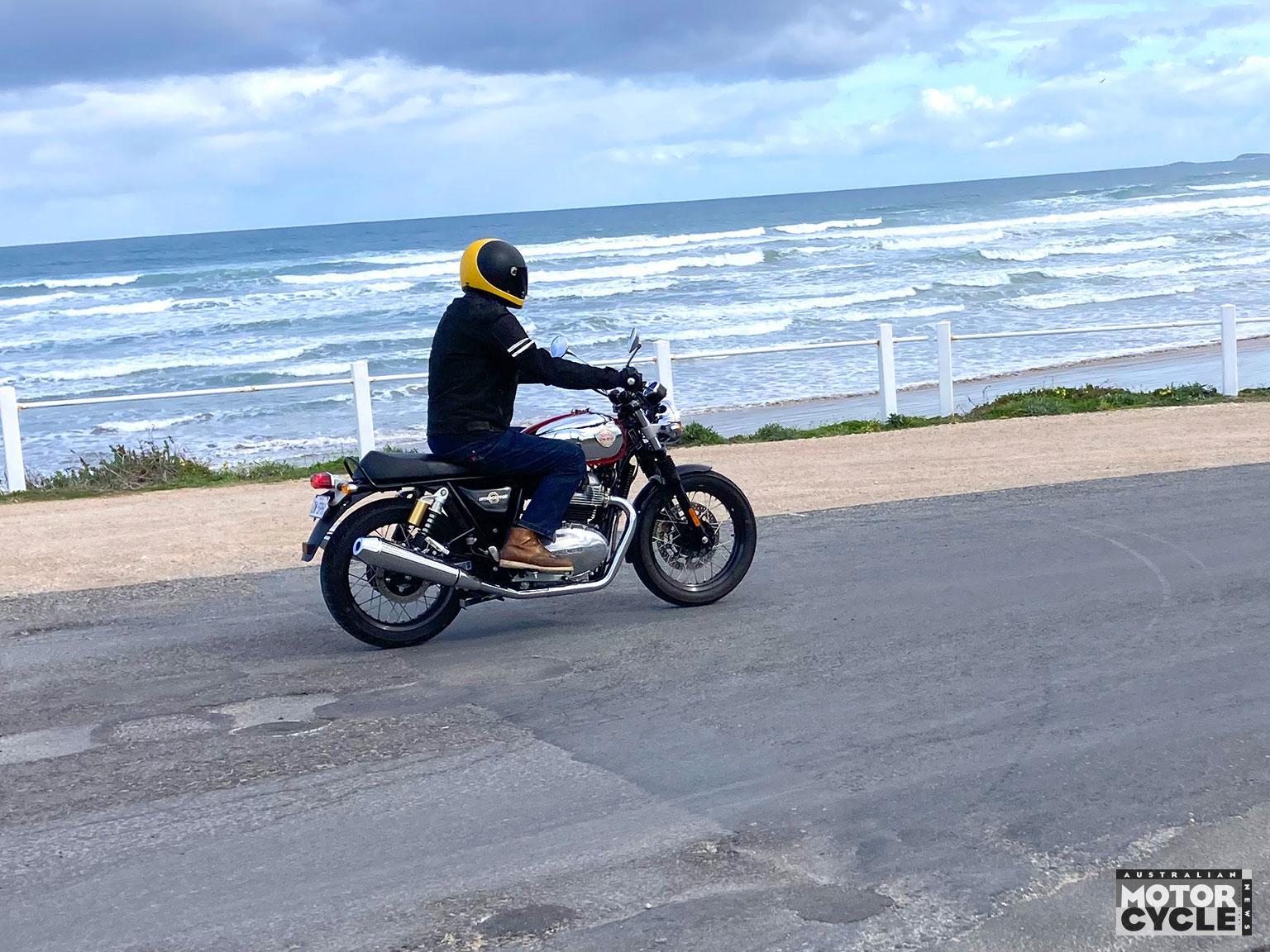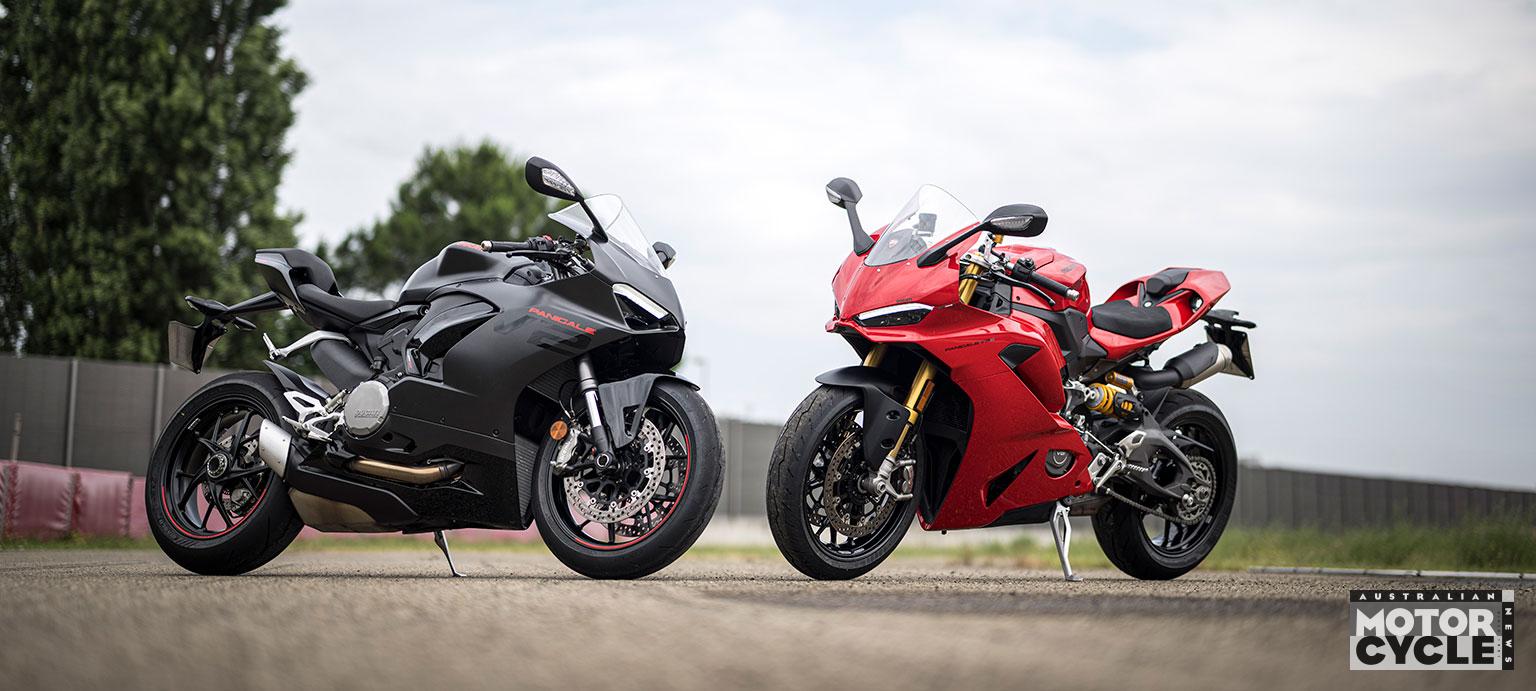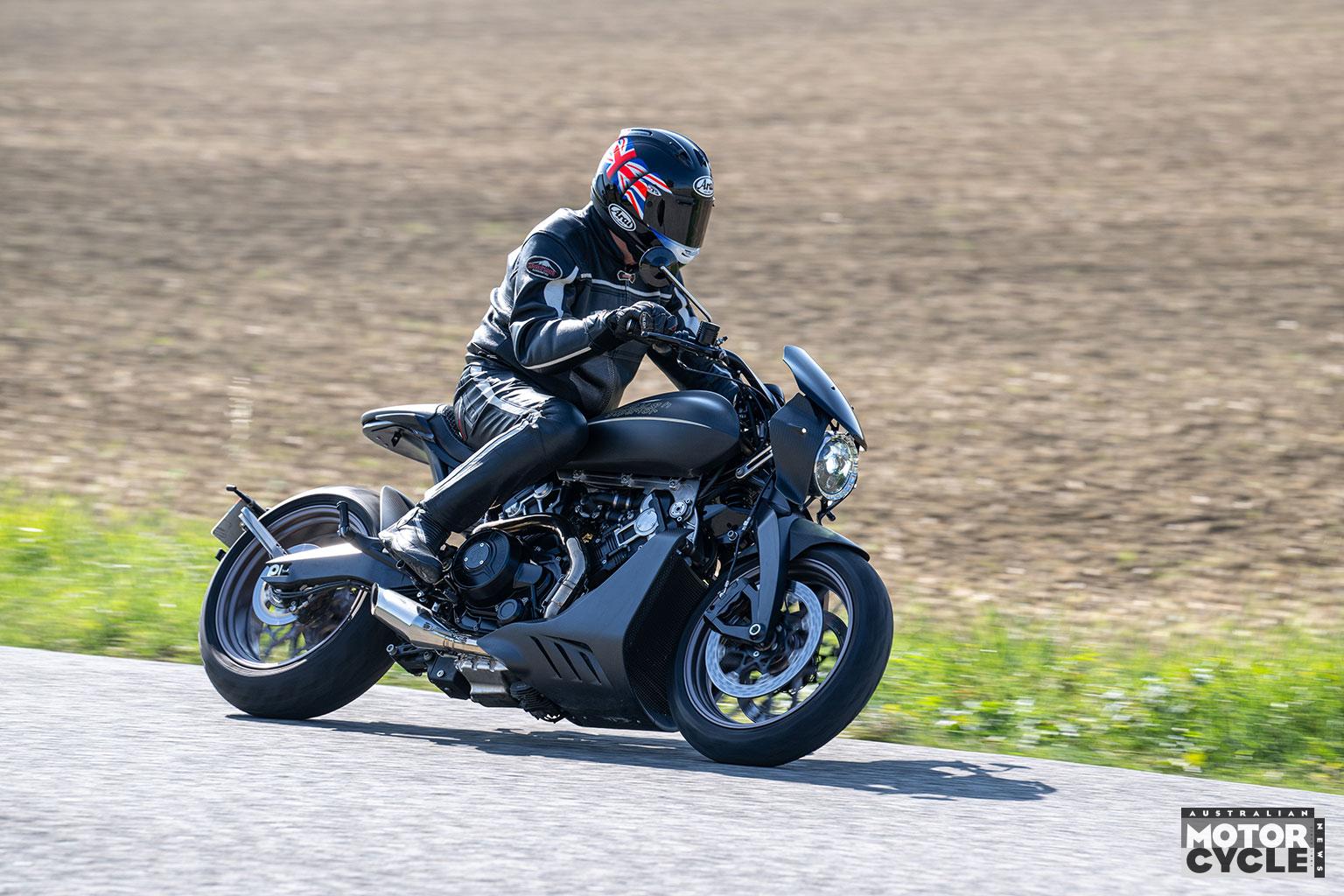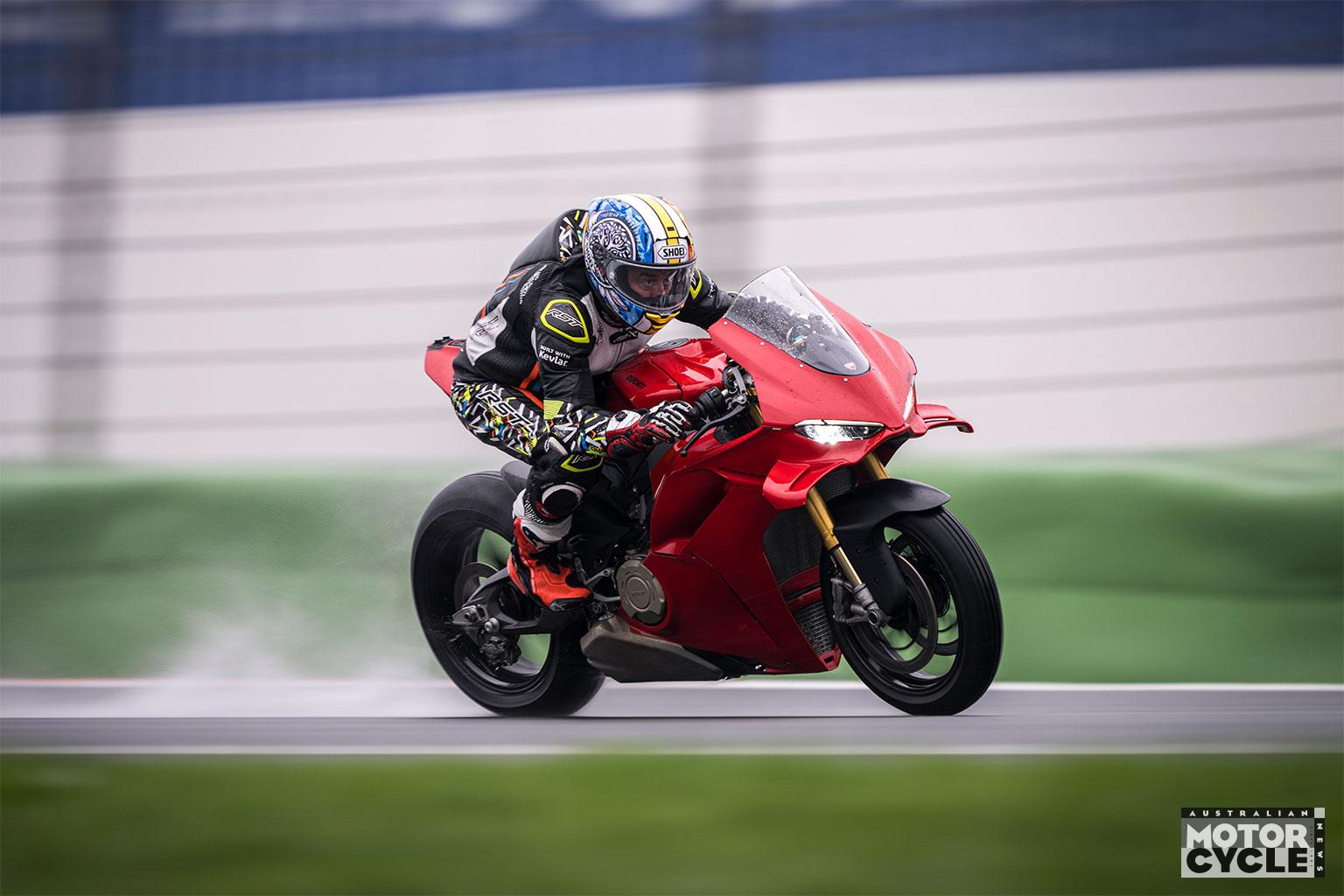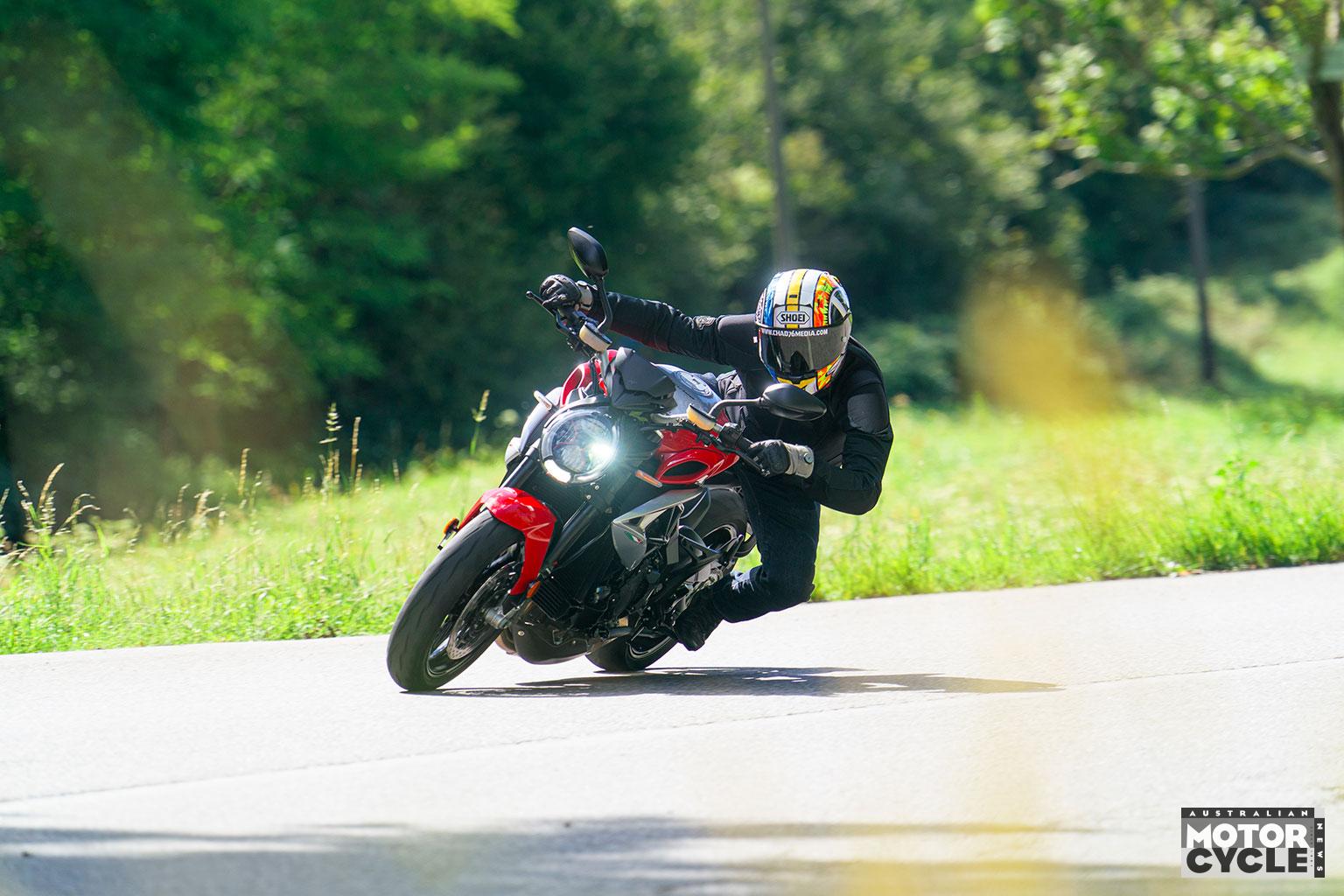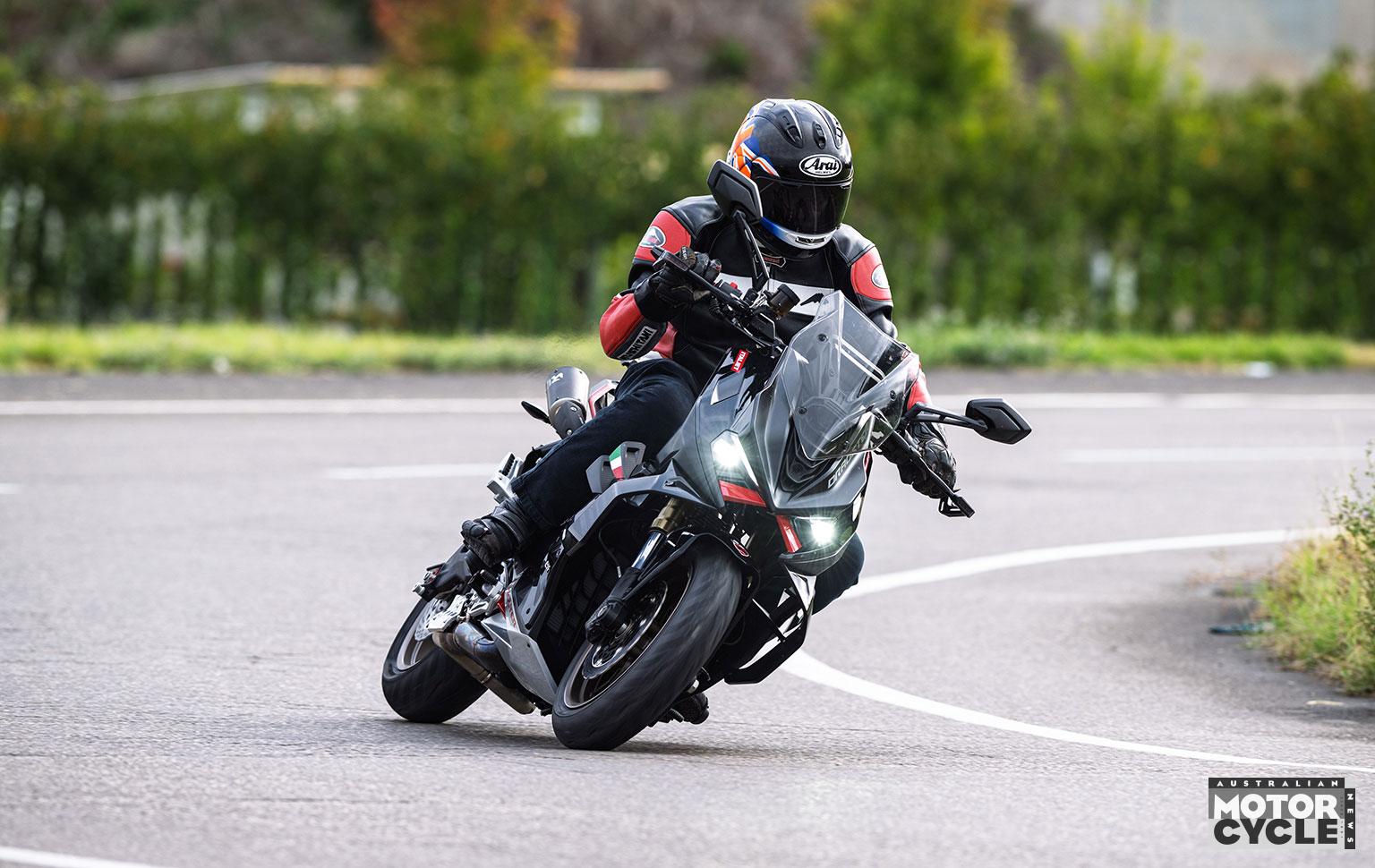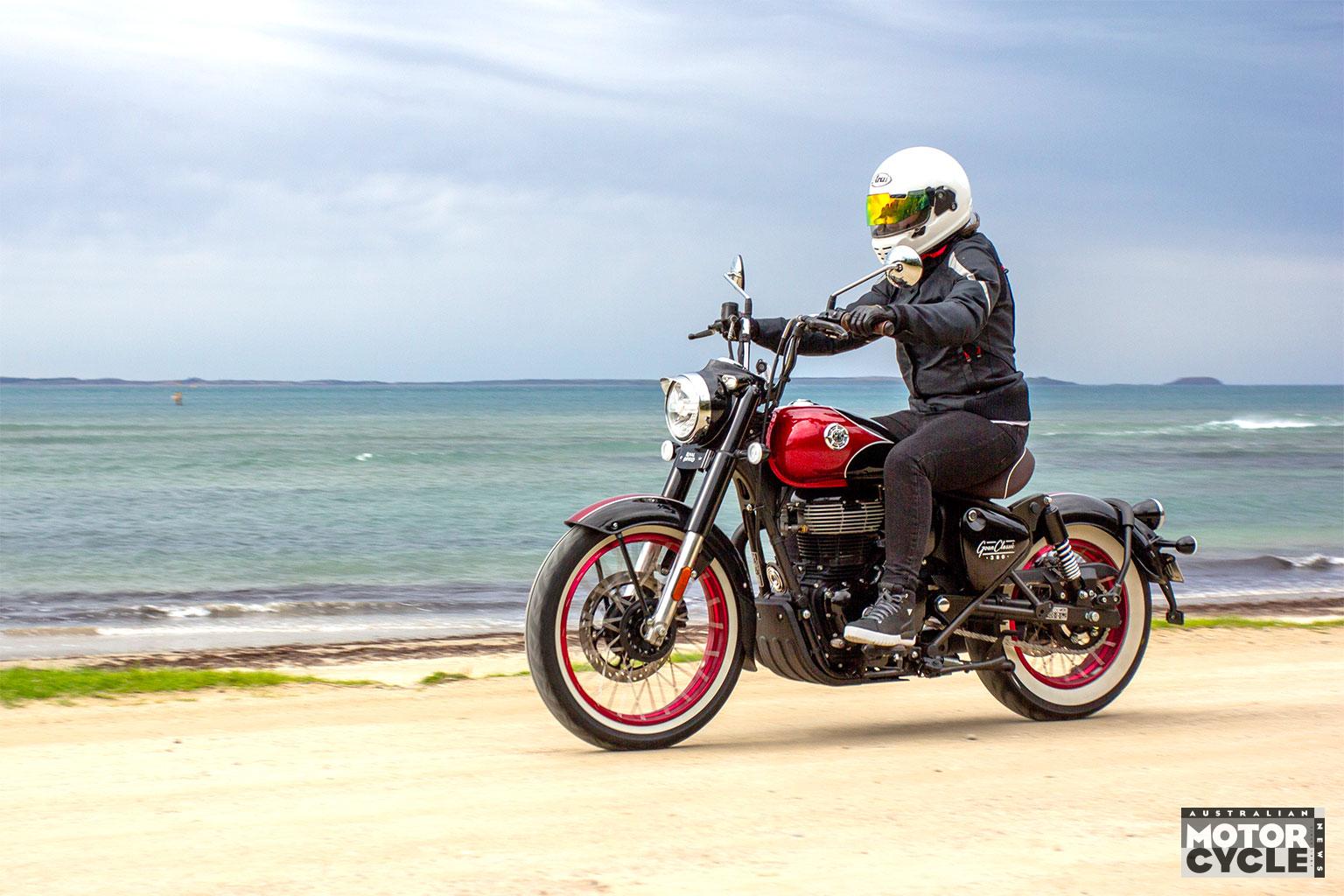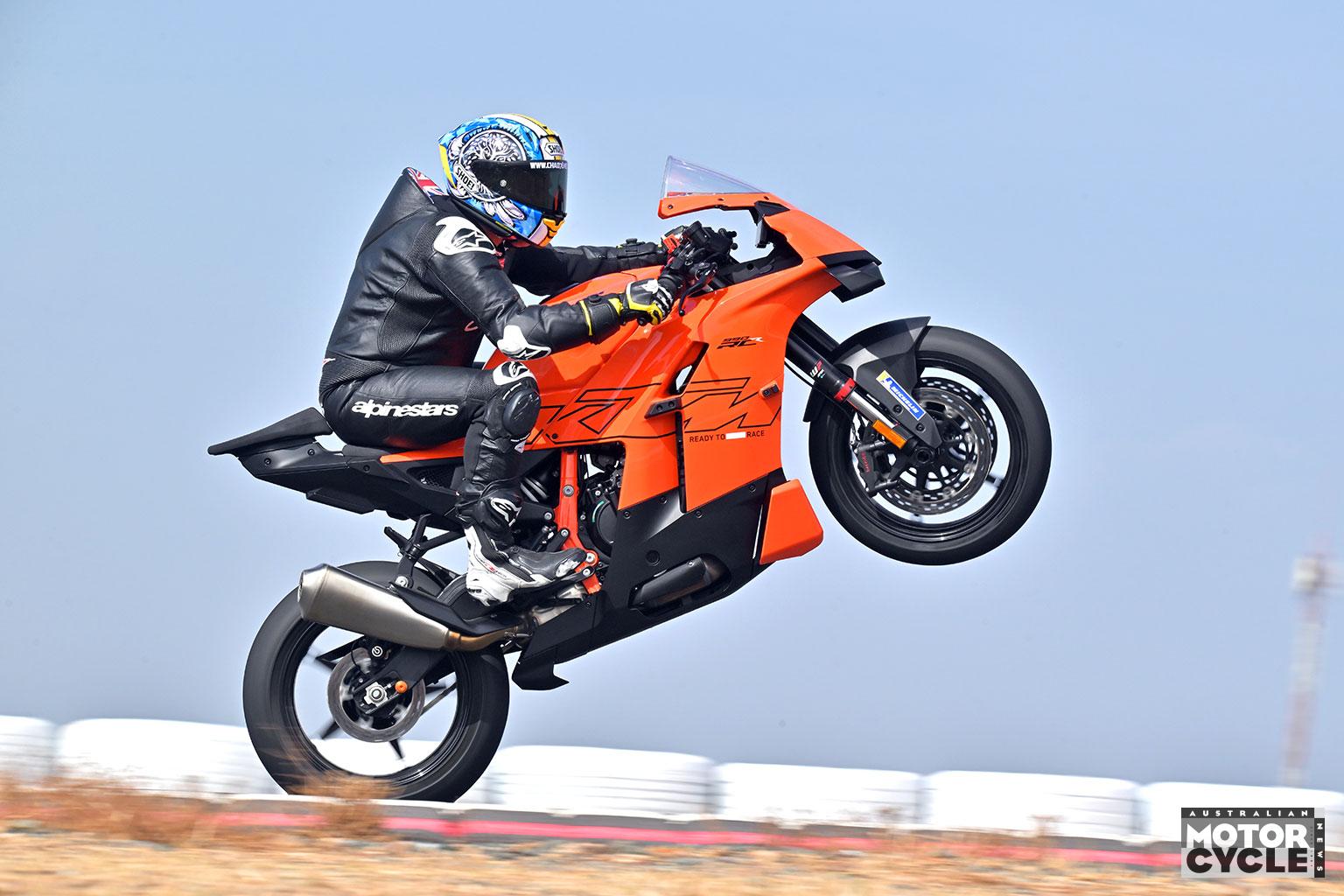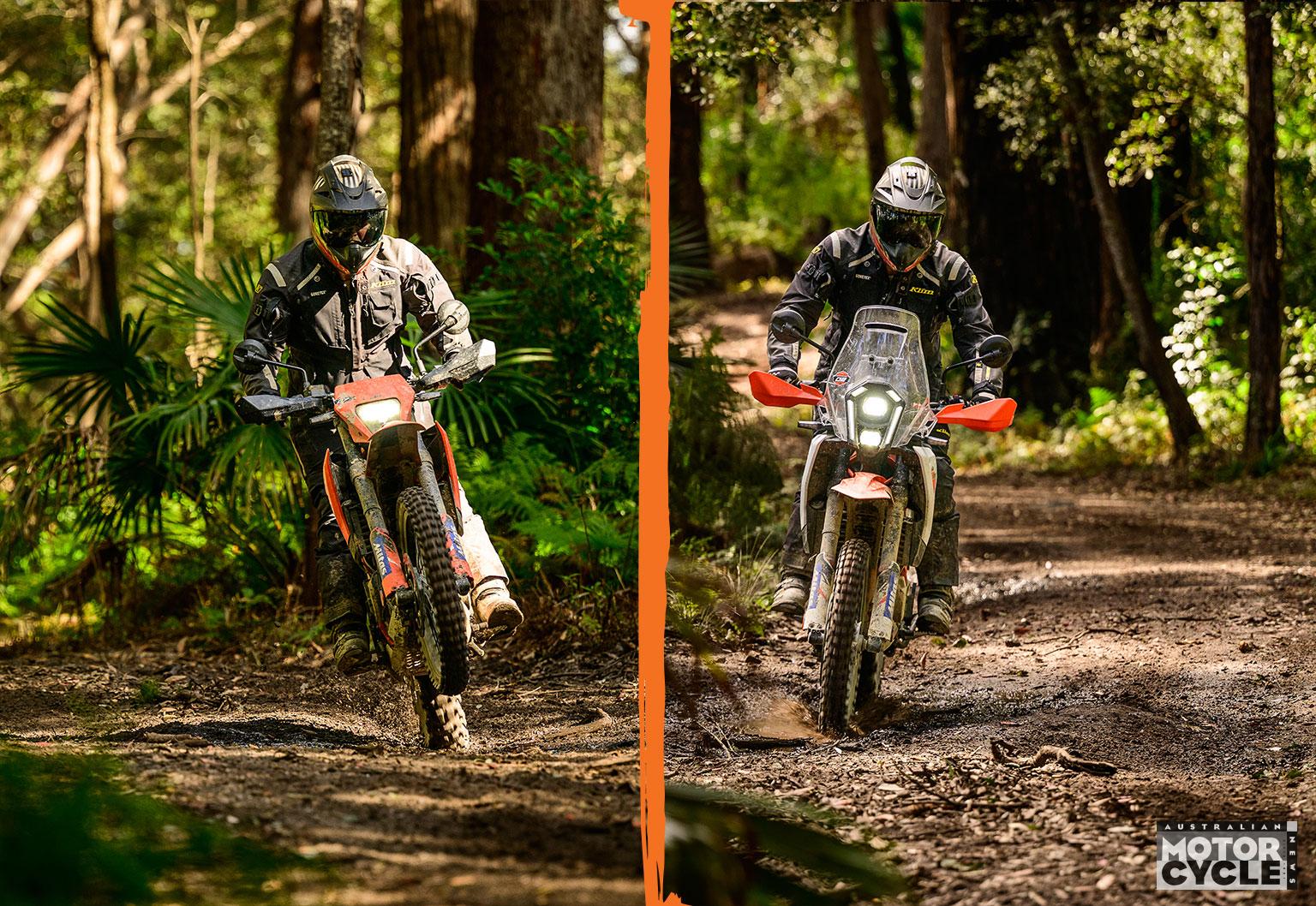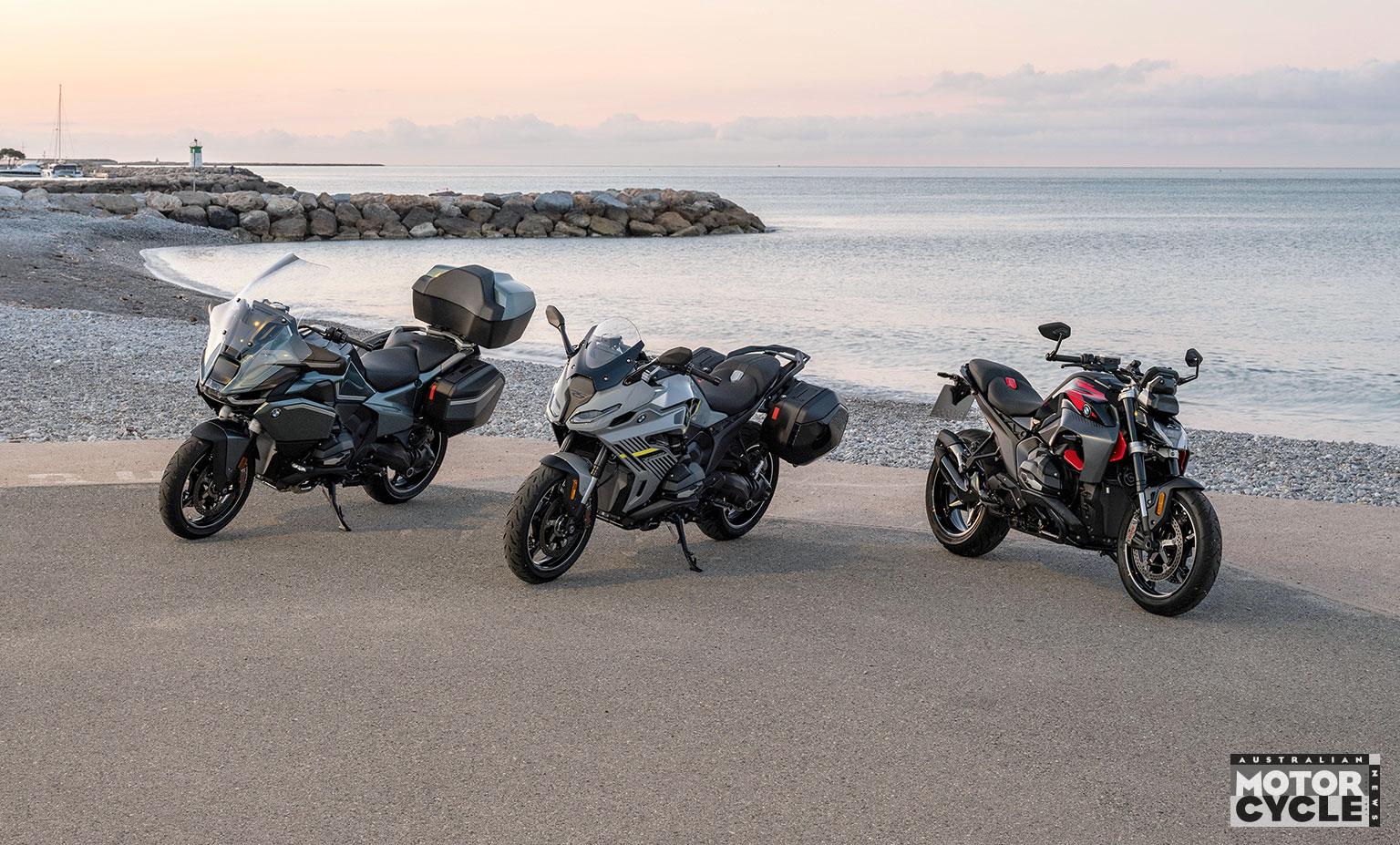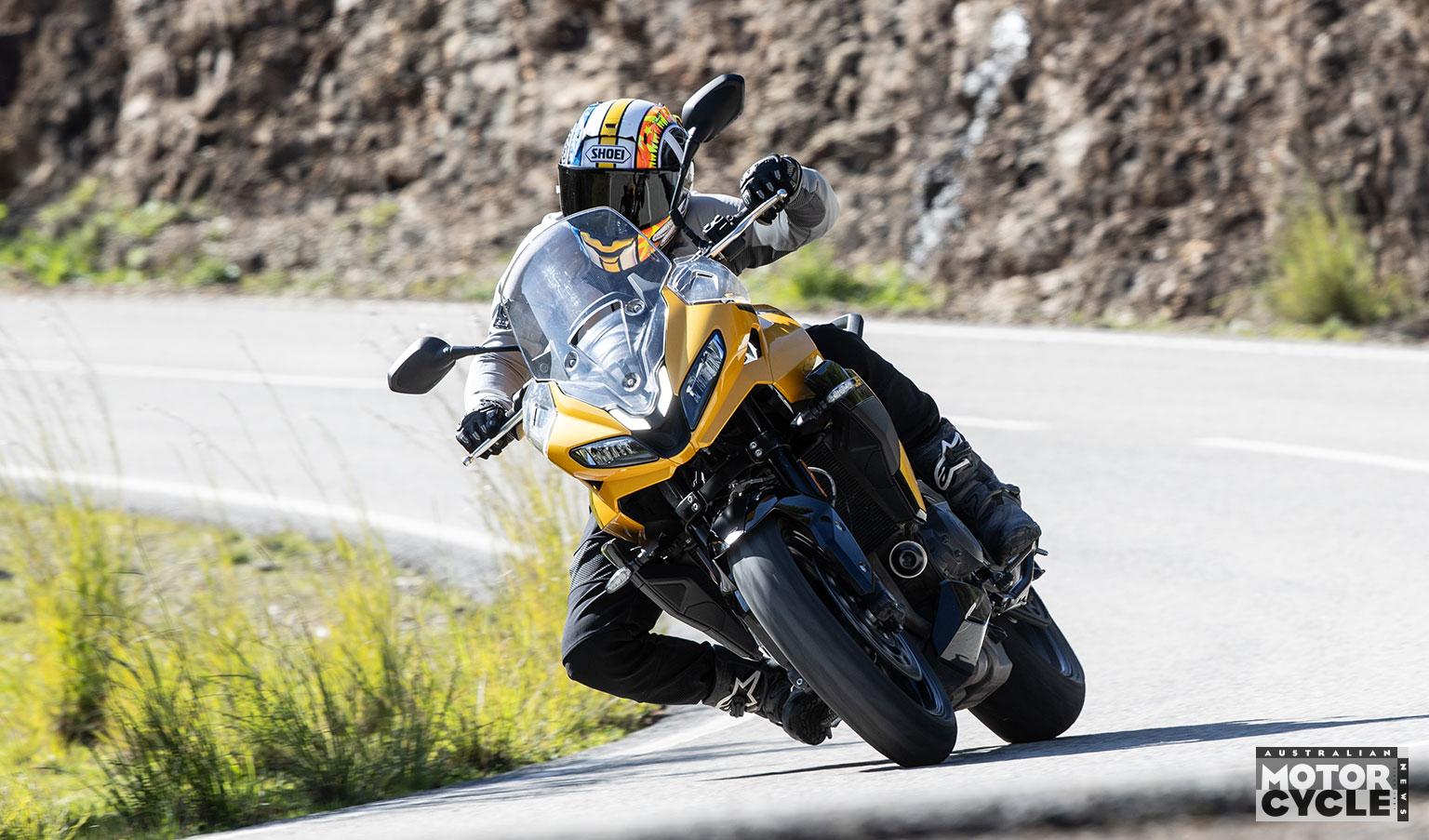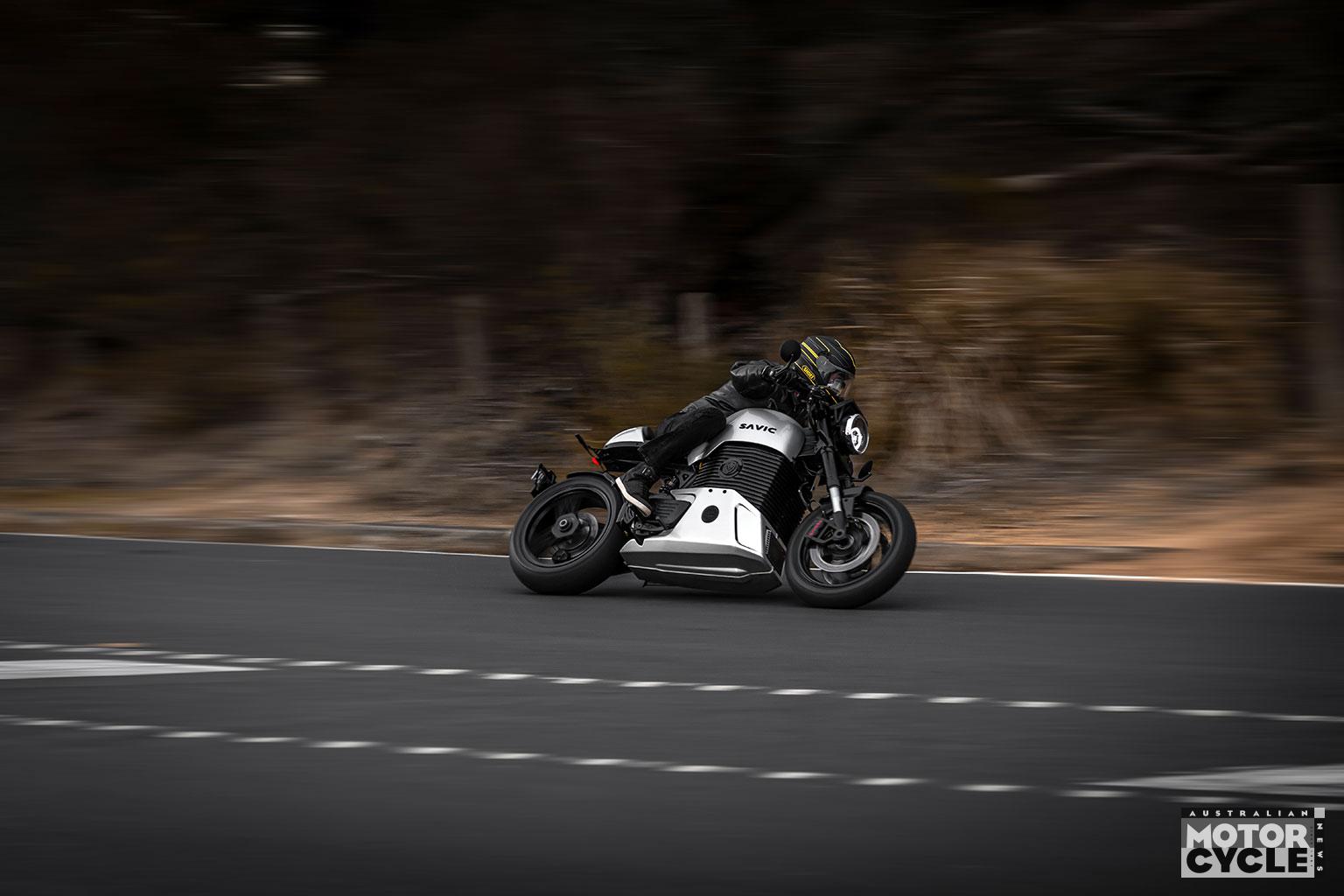The 798cc Brutale RR proves that thrilling Italian flair doesn’t always require a 200hp ticket to the chiropractor.
The 798cc versions of MV Agusta’s Brutale had escaped my notice until recently, to be (sorry) brutally honest. I had always fancied testing their more powerful and expensive stablemates, the 1000RS, 1000RR and 1000RR Assen, which are all 200-plus horsepower hypernakeds that truly lived up to the Brutale moniker. However, having recently conducted a full road test on the Dragster RR SCS (Vol 74 No 05), I was interested in finding out how its sibling compared.
At first glance, the Brutale RR looks like a more relaxed machine than the Dragster. It has conventional mirrors instead of bar-ends, a lower seat height and more traditional pillion footpegs (as opposed to the sexy swing-out pegs on the Dragster). Otherwise, they are very similar, so I wanted to see how it felt jumping straight off one and onto the other.

The first thing I noticed on the road was the ease of lane splitting without the cool, but impractical, ’bar-end mirrors found on the Dragster. I had thought that I’d find the slightly more relaxed seating position more comfortable and was surprised to discover it was quite the opposite. The 830mm seat height, which is 15mm lower than on the Dragster, seemed somehow to place a bit more weight on my wrists. Even so, it was still comfortable enough for my long legs which, as on the Dragster, slide in nicely between the tank fins.
I asked some shorter riders for their feedback and, while the lower seat height was of course appreciated, they still said the same of the Brutale as the Dragster – the angular fin at the base of the tank combines with the tubular frame to create an uncomfortable resting spot for shorter legs. If you are in the market for one of these bikes, test-riding them back-to-back would be the way to go to get a feel for which is more comfortable for you.

The engine in the Brutale RR is the same lovely 798cc triple found in the Dragster RR. It pumps out a claimed 103kW (140hp) at 12,300rpm and 87Nm at 10,250rpm. While this means that the bike always has sufficient drive across the rev range, it can feel a bit underwhelming at lower revs. The most rewarding riding style is keeping those revs above 6000rpm, which is not everyone’s cup of tea. If you’re really pushing on, 7500rpm to 12,500rpm is the zone where the acceleration genie lives.
Of course, as it’s a high-revving triple, things can get a bit buzzy. Again, this is not everyone’s happy place. Personally, I quite enjoy the engagement this provides, and it is in no way overwhelming or hand-deadening. There’s also that beautiful raspy engine note, especially from the optional black ceramic three-way silencer fitted to the test bike. The stock can also sounds great, so it comes down to personal preference and budget, because the ceramic item costs an additional $3200.
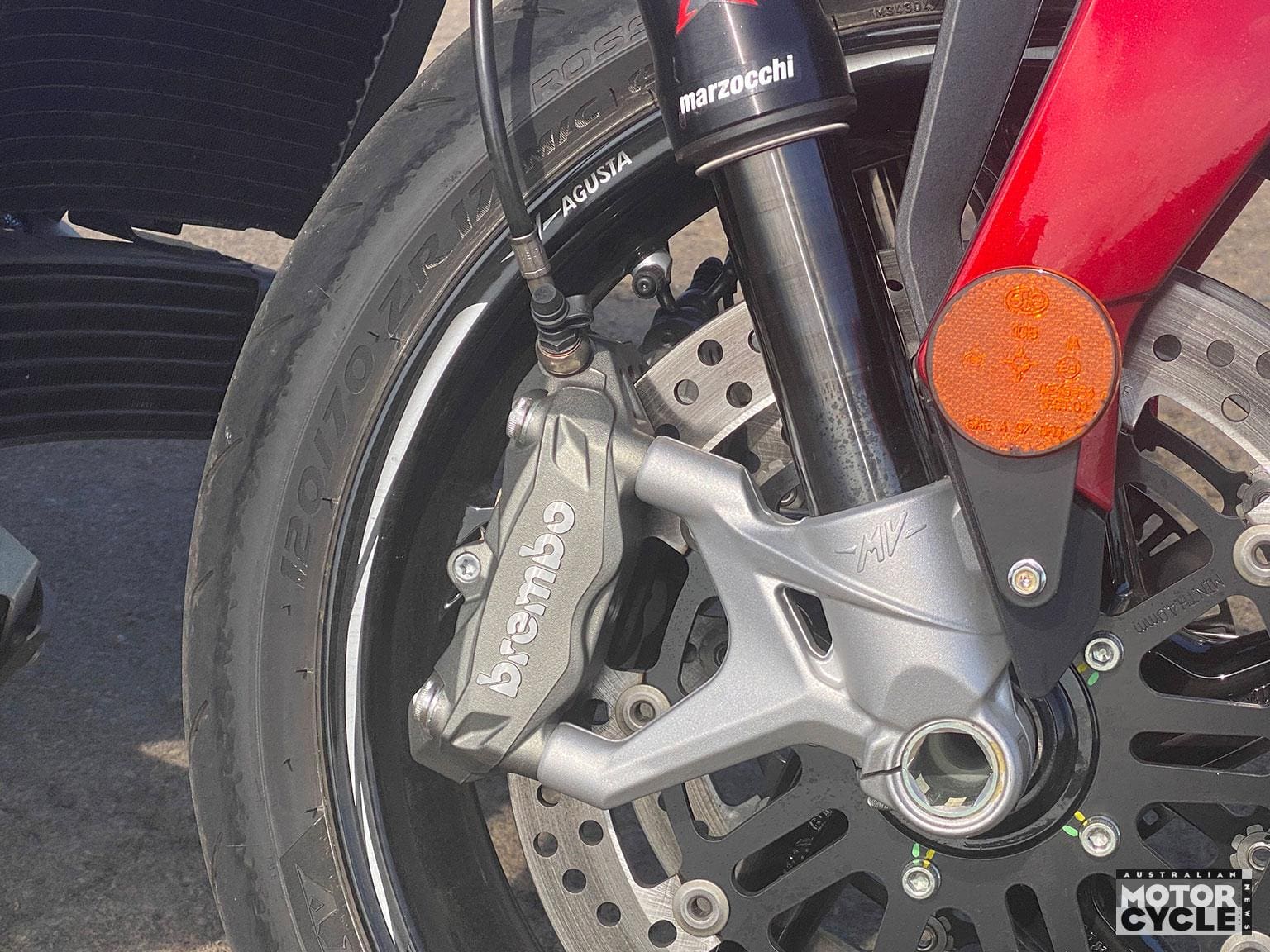
As with its Dragster sibling, the Brutale is fitted with adjustable traction, front wheel lift and torque controls, all with preset parameters that correspond to four ride modes – Normal, Sport, Race and Rain. The two-way quickshifter is a lovely slick system, with a positive feeling at the pedal. I did find myself missing the automatic Smart Clutch System found on the Dragster RR SCS, but this is mainly because I’d just jumped off the Dragster.
The front end of the Brutale feels nicely planted and there’s plenty of grip courtesy of the Pirelli Diablo Rosso IV tyres. The front is a 120/70, same as the Dragster, but the rear is a 180/55, while the Dragster gets a fatter 200. Both bikes have 17-inch wheels at both ends. In the real world, I found that this meant the Dragster felt slightly more ‘flickable’, but it also seemed to be slightly less stable at higher speeds on less than perfect surfaces. Nothing alarming, but just another observation that came from riding the bikes back-to-back.
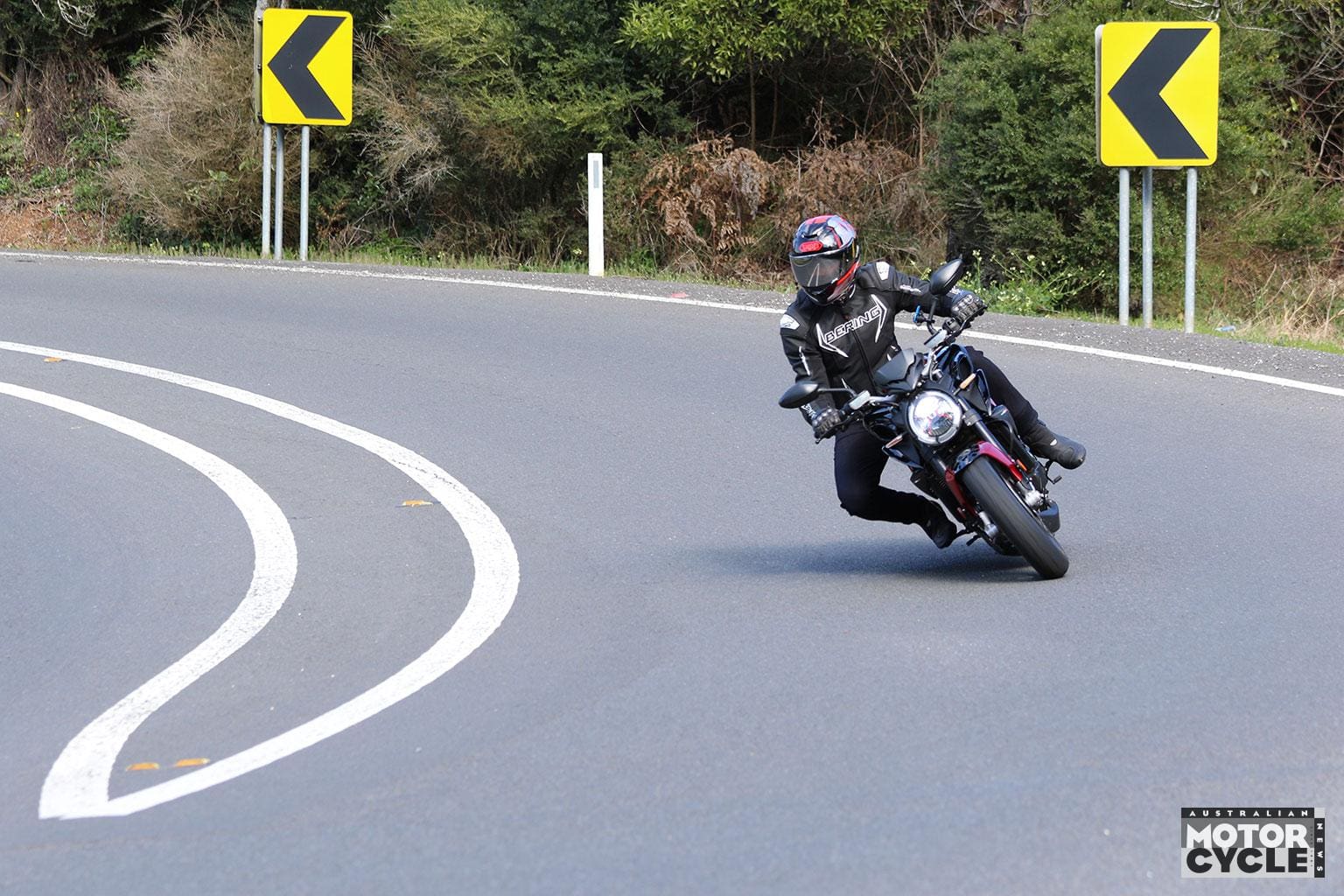
When it comes to potholes and corrugations, fully adjustable suspension front and rear deals well with most conditions. Perhaps not quite up to the standard of the automatic Öhlins found on more expensive MVs, but the 43mm Marzocchi fork up front and Sachs shock at the back work well. They are joined by an eight-setting adjustable steering damper, which admittedly felt like it did very little; maybe it would be more noticeable on the racetrack. It is a nice bit of bling, though, with ‘CRC’ stamped on it (the tank pad also sports this acronym). This refers to the Castiglioni Research Centre, MV Agusta’s San Marino high-performance design facility. This is where such beauties as the MV Agusta F4, Ducati 851 and 916, and Cagiva 500 were born, so it does make you feel like you’re in good company.
The Brembo braking system comprises dual 320mm floating discs with four-piston calipers up front and a 220mm disc and two-piston caliper at the rear. I had cause to test it in an emergency situation and it performed faultlessly. I definitely felt the Continental MK100 ABS kicking in, which also has a cornering function courtesy of the Brutale’s six-axis IMU inertial platform.
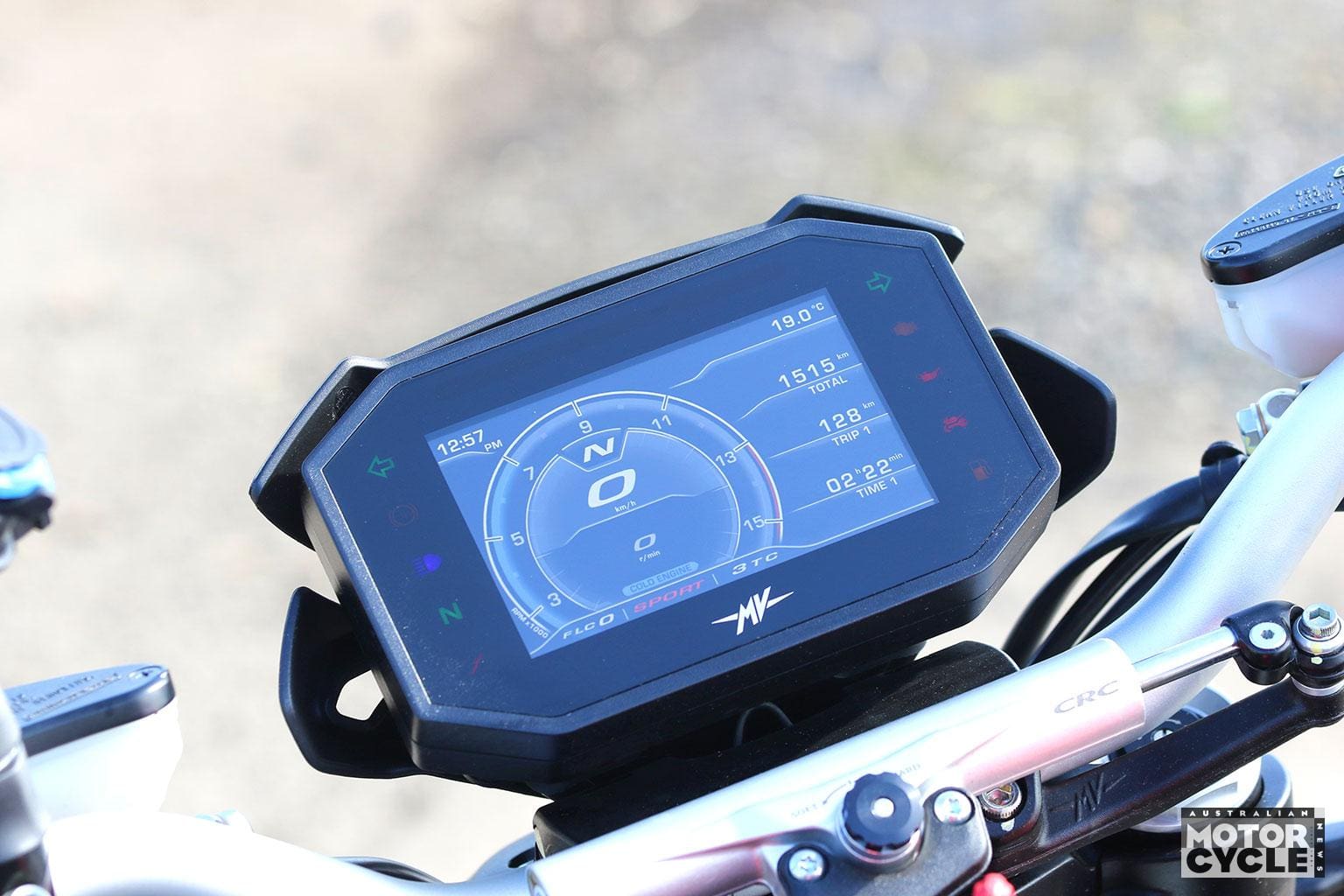
The Brutale RR features the same 5.5-inch TFT screen, Bluetooth connectivity and navigation via the MVride smartphone app as the Dragster. It also has (not perfect, but functional) cruise control as well as (functional but probably unnecessary) launch control.
As we’ve mentioned in earlier articles, KTM Group Australia and New Zealand assumed local distribution of MV Agusta Motorcycles last year. This means that a larger dealer (plus parts and servicing) network will benefit local buyers. It also means that, in the transition period, only the Fire Red Gloss/Intense Black Gloss version of the Brutale RR made it to Australia.
The bike I tested is a 2023 model, but it is identical to the MY24 – it’s just that the latter costs $500 more, ride away. Both models are covered by a four-year warranty and are examples of relatively affordable Italian exotica that may convert some MV Agusta-curious Aussies to take the plunge.
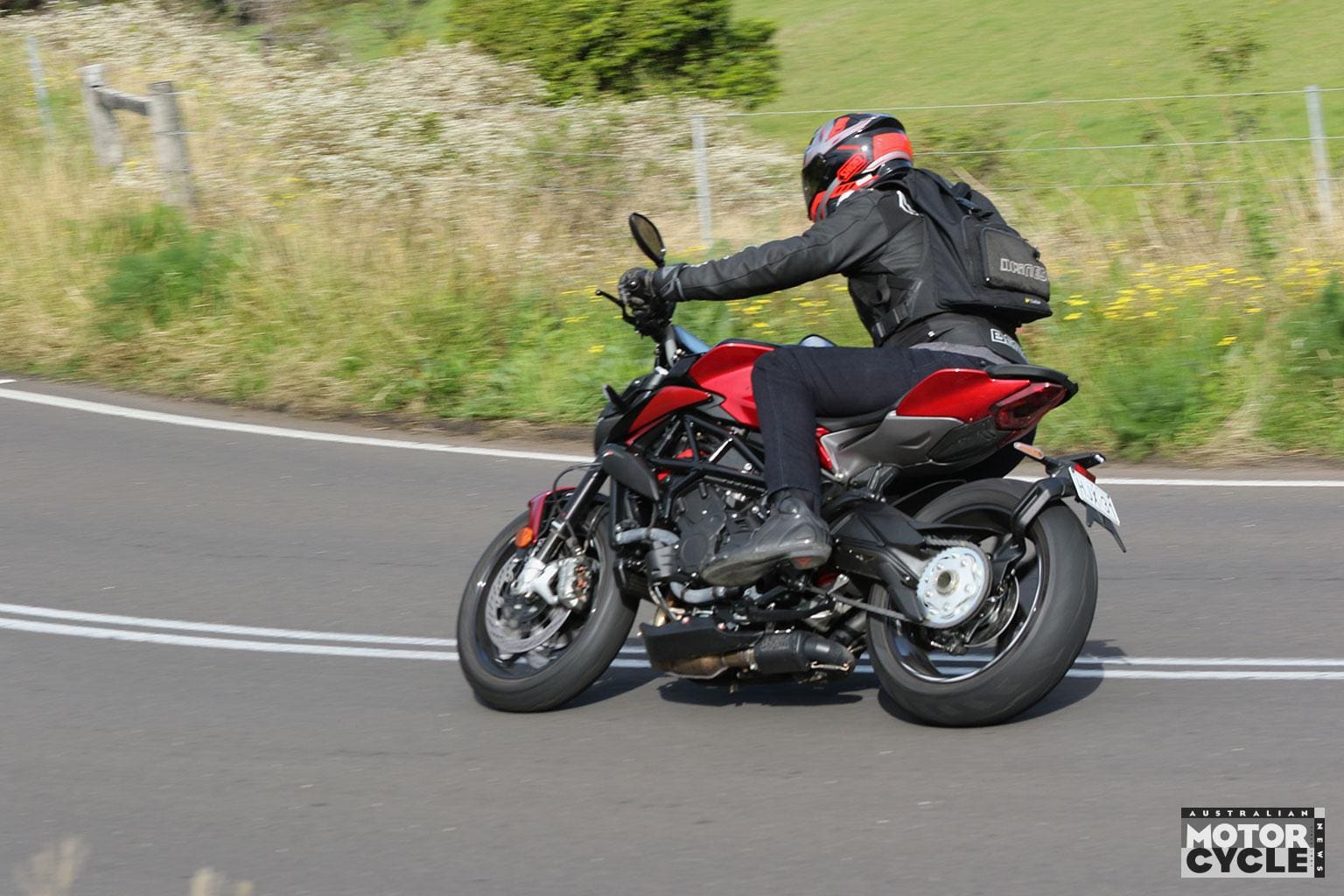
PROS – Stunning looker combined with an engaging engine that issues a rasping, racing exhaust note
CONS – Not as comfortable for shorter riders, and engine is a bit buzzy for some tastes.
WANT ONE?
IF YOU’RE after something rare and Italian for less than $30k, the base model Brutale R might be for you. Although it has the same capacity engine as the RR, it comes without a high-pressure injection system. With its lower compression ratio (12.3:1) and smaller (47mm) Mikuni throttle bodies, its peak power and torque figures are a claimed 82kW (112hp) at 11,000rpm and 85Nm at 8500rpm. It also comes minus a few features found on the RR, such as a steering damper, launch control, FLC and Mobisat anti-theft system with geolocation. There are no 2024 model Rs available in Australia at present, but you can get a MY23 for $24,795 ride away.
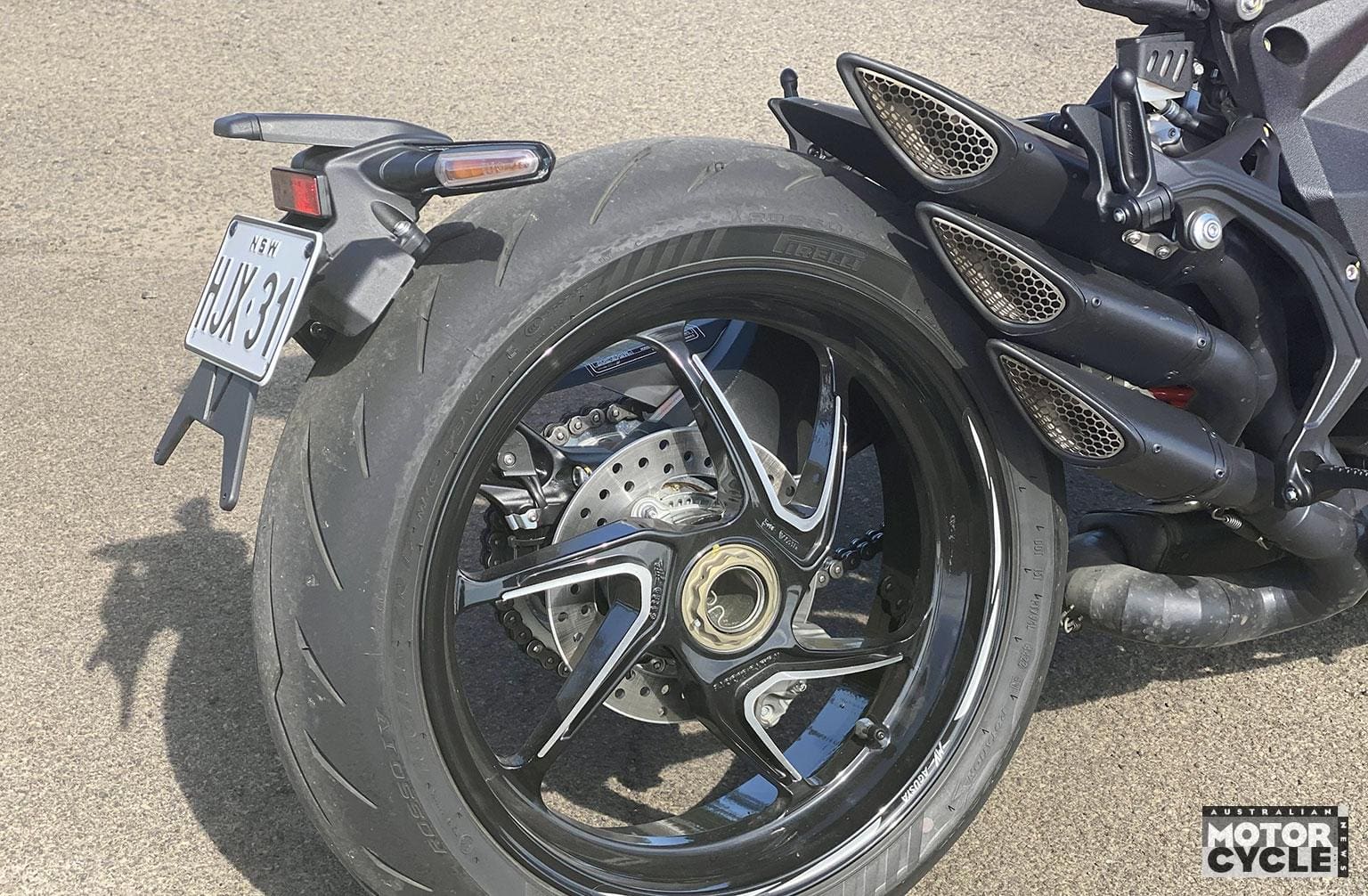
Specifications
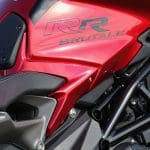
ENGINE
Capacity 798cc
Type Three-cylinder, DOHC, 12 valves
Bore & stroke 79.0 x 54.3mm
Compression ratio 13.3:1
Cooling Liquid
Fueling EFI, Motor and Vehicle Integrated Control System (MVICS 2.1) with six injectors, Mikuni throttle bodies
Transmission Six-speed
Clutch Wet multi-disc with hydraulic clutch actuation
Final drive Chain
PERFORMANCE
Power 103kW (140hp) @ 12,300 rpm (claimed)
Torque 87Nm @ 10,250rpm (claimed)
Top speed 244km/h (claimed)
Fuel consumption 5.8L/100km (tested)
ELECTRONICS
Type Not given
Rider Aids Six-axis IMU with traction control, front lift control, torque control and launch control, Electronically Assisted Shift (MV EAS 3.0) two-way quickshifter
Rider modes Normal, Race, Rain and Sport – plus the option to set custom mapping
CHASSIS
Frame material Steel tubular trellis
Frame type Trellis
Rake 24.5°
Trail 103.5mm
Wheelbase 1400mm
SUSPENSION
Type Marzocchi (front); Sachs (rear)
Front: 43mm upside down telescopic fork, rebound-compression damping and spring preload external and separate adjustment, 125mm travel
Rear: Single shock absorber with rebound and compression damping and spring preload adjustment, 130mm travel
WHEELS & BRAKES
Wheels Aluminium alloy
Front: 3.5 x 17 Rear: 5.5 x 17
Tyres Pirelli Diablo Rosso IV
Front: 120/70-R17
Rear: 180/55-R17
Brakes Brembo/Nissin, Continental MK100 ABS with rear wheel lift-up mitigation and cornering function
Front: Dual 320mm floating discs, four-piston calipers
Rear: Single 220mm disc, two-piston caliper
DIMENSIONS
Weight 175kg (dry claimed)
Seat height 830mm
Width 875mm
Height 1200mm
Length 2045mm
Ground clearance 135mm
Fuel capacity 16.5 litres
SERVICING & WARRANTY
Servicing
First 1000km
Minor: 7500km
Major: 30,000km
Warranty Four years, unlimited km
BUSINESS END
Price $30,495 (ride away) for MY23 (as tested); $30,995 (ride away) for MY24 (plus $3200 for black ceramic three-way silencer fitted to test bike)
Colour option Fire Red Gloss/Intense Black Gloss
CONTACT
www.mvagusta.com/au/en
